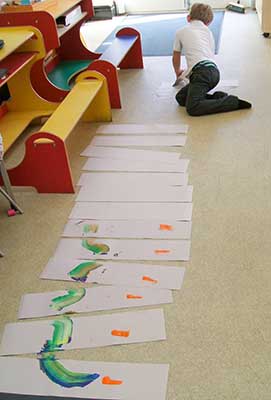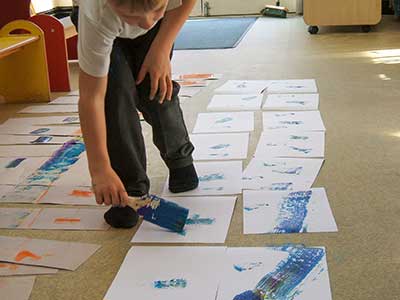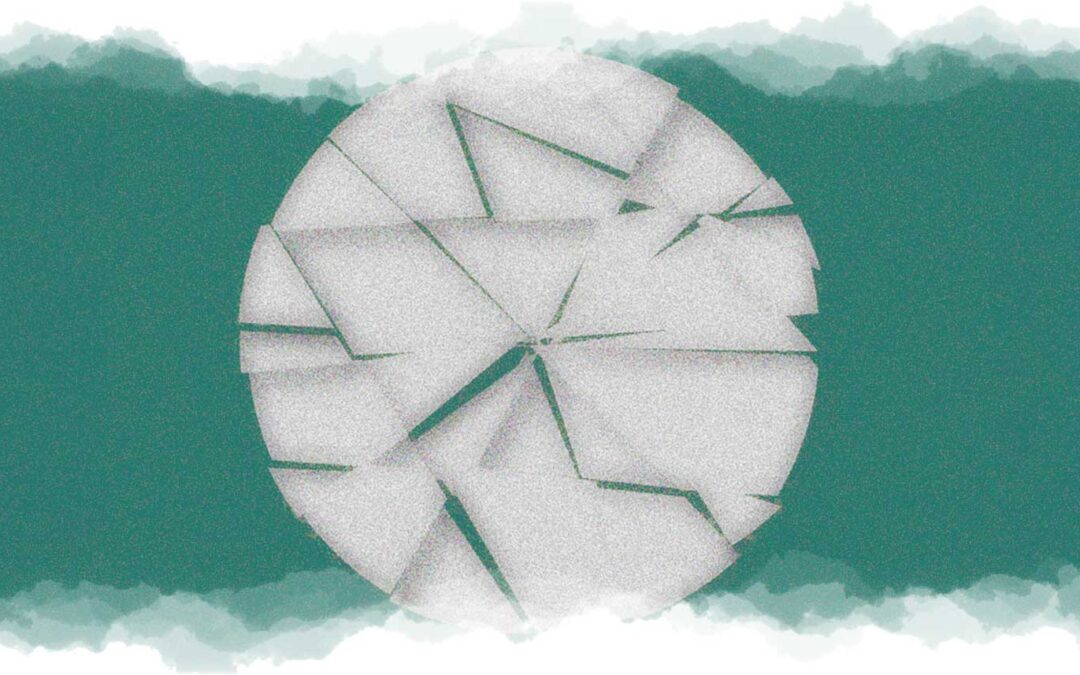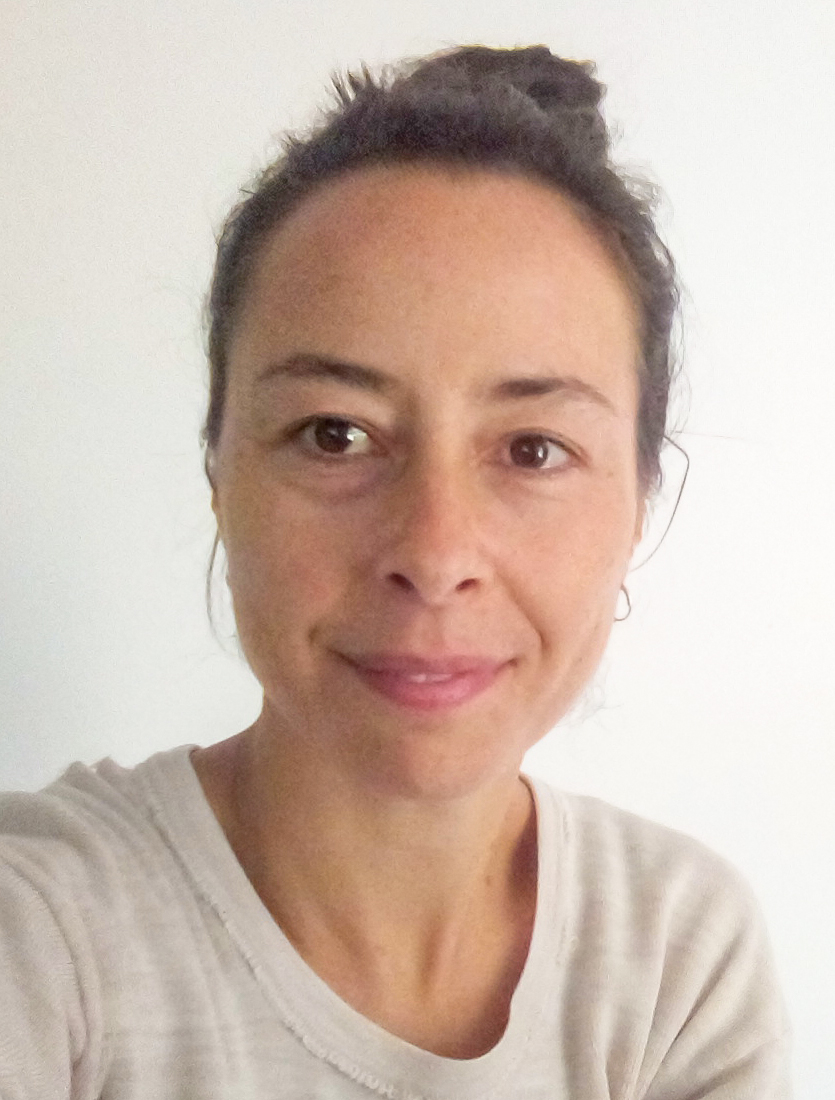Creativity, ableism and slow violence: A short introduction.
My contribution to this conversation is a response to the spark generated by the possibility and scope of applying a ‘slow violence reading’ to the study of childhood (Spyrou, 2021) and, in particular, to examine how slow violence claims children’s experiences of creativity.
Here, I focus on some of the practices pervading children’s creative life and autonomy, and the tendency to harness aesthetic literacies to an ableist ideal, limiting access to – and an appreciation of – disabled children’s creative agency (and resources).
Adopting slow violence as a theoretical leading thread enables a necessary analysis of the educational and societal parameters affecting creativity in children’s lives and educational opportunities; it also helps to re-centre and stimulate critical attentiveness towards the ways in which such limitations become normalised and enduring, are left unquestioned and are seldom challenged.
Slow violence, cultural hegemony and autonomy.
In analysing the ways through which different agents, agencies and discourses operate subtly and – often – instrumentally, it is possible to uncover some of the reductive, subordinating and unequal processes that limit children’s autonomy and, most frequently, their freedom to present their views and experiences by adopting visual, tactile and aesthetic means of expression. The enduring manifestations of these limits on expressive freedom(s) are products of slow violence.
Unpacking these limitations allows for an examination of the cultural conditions in which these violent processes become rooted and spread, and consequently produce a normalised regulation of children’s creative agency and autonomy. This cultural regulation is woven into perceptions of capability, strengthens ableism, and appears to be impersonal. Thus it becomes justified contextually, deepening the efficacy of its violent connotation. Cultural-contextual embeddedness makes this type of violence barely visible and may be further understood by bridging slow violence with Gramsci’s notion of cultural hegemony. Gramsci provides a vocabulary and the historical and political saliency for understanding slow violence by clarifying the ways in which different agents assimilate power while dominating and distorting the autonomy afforded to subordinate others whom they victimize (Lears, 1985). In educational settings, the permeating and persuasive force of cultural hegemony produces pedagogic and educational norms that impoverish disabled children’s opportunities to elicit and engage their creative and aesthetic literacies, traversing experiences of research participation and education, despite the rhetoric of progressive approaches to diversity and inclusion. This type of slow violence ‘masquerades’ as practical necessity, in subtle and overt adjustments that influence the use and availability of (even basic) art materials and tools, as well as obscuring creative agency, in schools and research.
Subjective ideals around using creative materials are implicated in the reproduction of a ‘common sense’ (in the Gramscian connotation) that is understood as objective, through omissions legitimised in discourses around risk, ‘messiness’ and practical mastery, producing ableist attitudes in spaces that crystallise these exclusionary practices as non-violence. “Gramsci’s social thought contains some remarkably suggestive insights into the question of dominance and subordination” (Lears, 1985, p. 567), illuminating issues of dependency, control, and the slow and unfolding devaluation of creative practices in education, that can manifest in insidious limitations and resistance towards disabled children’s (creative) autonomy, while forestalling the recognition and flourishing of aesthetic literacies, creativity and sensibility. An intersecting reading of slow violence and cultural hegemony can, thus, solicit further opportunities to analyse the conditions in which creative freedom and autonomy are obscured and stifled, and contribute to the possibility of reimagining the space and interactions that creative expression necessitates.
The significant role of such a possibility to counter slow violence can be realised in a context that stimulates equitable dialogue; this idea draws on the relational, visual and material experiences and processes that arose in the field activities I facilitated with children, part of an arts-based research project on disabled childhoods and self-made identities (Bernardi, 2020). The scope and methodology of the project developed into a dialogic space in which respect and recognition, children’s priorities, their aesthetic and creative literacies and autonomy, were valued and intersected.
Creating (in) dialogic spaces.
Passivity and indifference to slow violence can only help to stabilise its rhetoric and rule, in contexts and relationships that uphold unwritten norms and aesthetic canons and expectations, while intellectualising justifications and consequences of disenfranchising and excluding disabled children from exercising creative agency and autonomy; highlighting the habit of sifting what are believed to be prioritised and incompatible (human) experiences. What can be learnt from disrupting this habit can be transformative, for children and adults alike.
Through co-production and equity in designing the physical research space, in which to reflect on and represent experiences, not prompted by questions or cues, making reciprocal interaction and respect within it explicit, children occupied an agentic role, articulating visually and experientially matters of subjective importance that could be explored for their sociological and educational value.
The children involved in the study used art materials and expressive tools, embodiment and time, to materialise experience through visual and tangible sense making, exploring their agency and shaping – metaphorically and practically – their ideas and the space they occupied; a space protected from the performative and evaluative discourses that silently trespass on autonomy, agency and self-made identities, in other contexts.
The creative research environment became integral to valuing and nurturing children’s aesthetic processes, a place in which to explore, establish and reclaim the self and the agentic nature of sense making.
The agents and place of slow violence.
The project gave me the opportunity to learn (about) and observe children’s practices of self-discovery, presentation and representation, their ways of reimagining identity while disrupting the reductive societal gaze orientated towards diagnosis, dis/ability and inability.
During the course of the field activities it became clear that access to creative practices was demarcated according to ableist assumptions; writing and directed instruction overshadowed the possibility of visual responses, narratives and spontaneous experimentation. Art materials and autonomy were either limited or rationed. Interactions in school, the educational content and ableist assumptions appeared to merge, uncovering the context and agents of slow violence.
It was possible to recognise and examine instances of slow violence in the absence of opportunities for children to create, explore and express ideas in material and embodied forms, contributing to the degradation of the very fabric of children’s education (Adams, 2011) and reducing the terms through which it is possible to witness human flourishing.
Disabled children’s experiences of limited autonomy, to engage self-expression and explore creative agency, appeared in different guises endorsed by adults, whose actions seemed to be conditioned by unwritten norms, devaluing access to artistic tools and competencies and reinforcing ableism (Blandy, 1994; Penketh, 2017).
In the school environment, opportunities to integrate children’s autonomy and creativity – in their learning and relational understanding – were missed (or absent), in contrast with the dialogic premises and ethos of the evolving processes and nature of their experimenting in the research space. Through attentive silence and in accord with children’s choice to involve me in the creative process, in ways that were meaningful to them, it was possible to reimagine children’s participation, values, identity, dreams and cultures.
The photographs are examples of the visuals from the field activities with children (Bernardi, 2019); they illustrate the creative and embodied intent in children’s practices of self-presentation, spatial and relational expression, and the functional role they assigned to the visual, aesthetic and material forms that their agency could take.

© Francesca Bernardi.You will need to request permission from the copyright holder for use of the image(s).

© Francesca Bernardi.You will need to request permission from the copyright holder for use of the image(s).
Reimaging dialogue to give equal importance to processes of experimentation, visual and tactile sense making, silence, pauses, embodiment and movement, can expand the possibilities and potential of self-expression; disrupting pre-existing ideals around communication, agency and autonomy, revealing and respecting children’s cultures, self-made identities, agentic worth and aesthetic literacies.
Cite as: Francesca Bernardi, “Aesthetic literacies and research with disabled children, countering slow violence on creativity and autonomy,” in Reimagining Childhood Studies, 11th June 2021, https://reimaginingchildhoodstudies.com/countering-slow-violence-on-creativity-and-autonomy/.

